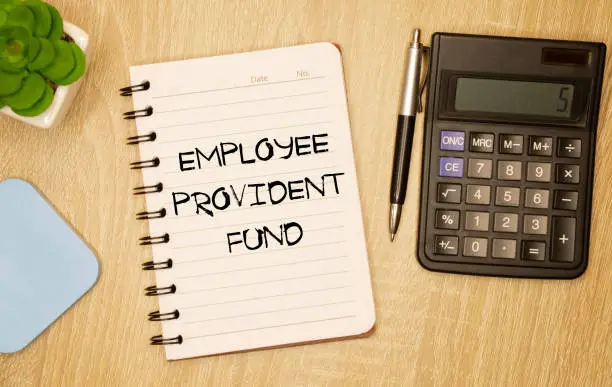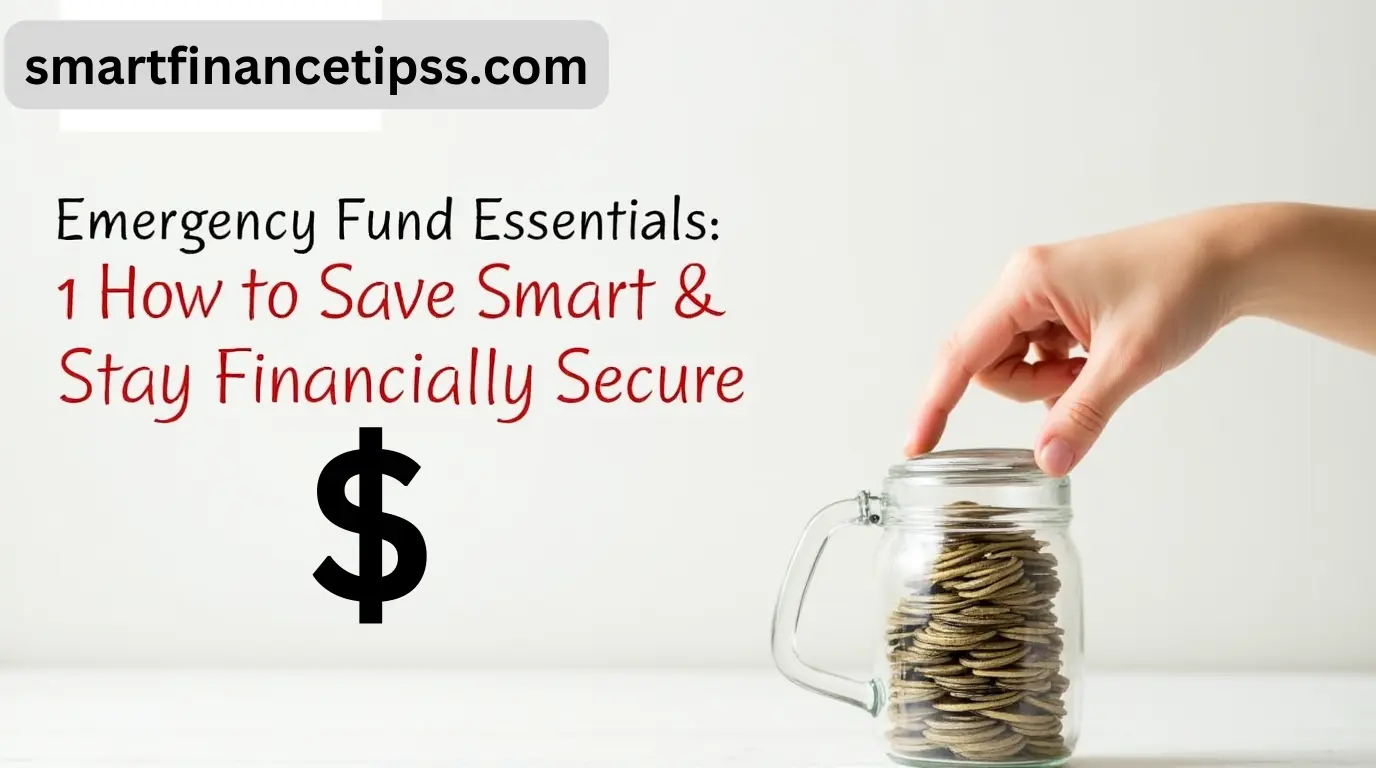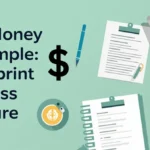The Best Fluffy Pancakes recipe you will fall in love with. Full of tips and tricks to help you make the best pancakes.
Table of Contents
Understanding the Importance of Emergency Fund Essentials1
Having an emergency fund is a fundamental aspect of achieving financial stability and security. An emergency fund serves as a financial safety net that allows individuals to manage unexpected expenses without incurring debt or experiencing significant stress. Various scenarios underscore the importance of having such a fund, including unexpected medical bills, sudden job loss, or urgent home repairs. Each of these situations can arise without warning and can place an individual’s financial future at serious risk.
Medical emergencies, for instance, can be costly and may require immediate access to cash for treatment and care. Without an emergency fund, individuals might find themselves relying on credit cards or loans, leading to increased financial strain. Similarly, job loss can trigger a cascade of financial challenges, as it often takes time to secure new employment. During this transition period, an emergency fund can help cover essential expenses, such as housing, utilities, and groceries, preventing the individual from falling into a cycle of debt.
Additionally, urgent repairs, whether they involve a vehicle breakdown or home maintenance, can quickly deplete savings if no emergency fund is in place. This financial cushion allows for timely resolutions rather than delays that may compromise one’s safety or mobility. The psychological benefits of maintaining an emergency fund should not be overlooked either. Knowing there is a reserve available for unforeseen circumstances promotes emotional peace of mind and significantly reduces financial stress. This alleviation of anxiety allows individuals to focus on their everyday responsibilities and long-term financial goals without the constant fear of impending financial doom.
In combining these aspects, it becomes clear that having an emergency fund is not simply a financial strategy; it is a crucial component of a comprehensive financial plan, fostering a sense of security and well-being in one’s personal and financial life.
Determining the Right Amount for Your Emergency Fund

Establishing an emergency fund is a crucial step in financial planning and security. The amount to allocate for this fund typically varies based on individual circumstances, and assessing your unique financial situation is essential for setting an appropriate target. A fundamental starting point is evaluating your monthly expenses, which encompass necessities such as housing, utilities, groceries, transportation, and healthcare. It is advisable to calculate these expenses meticulously, as they provide a baseline for how much you might need to cover should an unforeseen financial situation arise.
Income stability is another critical factor to consider when determining the right amount for your emergency fund. Job security and the predictability of future earnings can significantly influence how much you should save. If you have a stable job with a consistent income, a smaller emergency fund may suffice, as your ability to replenish it quickly is higher. Conversely, if your income fluctuates or you are self-employed, it might be prudent to save a larger amount to account for potential gaps in earnings.
Additionally, individual lifestyles will impact the final figure for your emergency fund. Factors such as family size, healthcare needs, and personal circumstances can drive higher costs, necessitating a larger fund. Common financial advice suggests saving three to six months’ worth of living expenses as a safety net; however, tailoring this guideline to fit personal situations is vital. For instance, a family might lean towards the higher end of this spectrum, while a single person with fewer obligations may feel comfortable with the lower end. Striking this balance ensures preparedness for unexpected challenges in life.
Choosing a Suitable Savings Account for Your Emergency Fund
When establishing an emergency fund, selecting the right savings account is crucial. The primary goal of an emergency fund is to provide easy access to cash while also earning a competitive interest rate. Here we explore different types of savings accounts suitable for this purpose, highlighting their advantages and disadvantages.
First, traditional savings accounts are widely available at most banks and credit unions. These accounts usually offer modest interest rates and allow for easy withdrawals. However, the interest earned may not keep pace with inflation, diminishing your fund’s purchasing power over time. They are a reliable option but may not be the best choice for those prioritizing growth.
In contrast, high-yield savings accounts can offer significantly higher interest rates than conventional savings accounts. Typically offered by online banks, these accounts can help your money grow more effectively. Nonetheless, they may come with certain requirements, such as minimum balance thresholds or limited monthly withdrawals. Thus, while they provide better returns, it is essential to assess whether the associated conditions align with your financial habits.
Another option is money market accounts, which often provide a good blend of features found in both traditional and high-yield accounts. Generally, they offer higher interest rates, check-writing capabilities, and debit card access. However, they may require a larger initial deposit and impose transaction limits. Consequently, money market accounts can be beneficial for those who prefer a more flexible approach while still aiming to grow their savings.
Ultimately, choosing the right type of savings account for your emergency fund involves consideration of your financial situation, access preferences, and growth objectives. By understanding the pros and cons of each account type, you can make an informed decision that aligns with your emergency fund strategy.
Setting Up a Budget to Start Saving

Establishing a budget is a vital step in building your financial safety net, particularly when it comes to creating an emergency fund. A well-structured budget not only helps track your income and expenses but allows you to allocate a portion of your finances toward savings. Start by assessing your monthly income, which serves as the foundation for your budgeting efforts.
Next, categorize your expenses into fixed and variable costs. Fixed costs, such as rent or mortgage payments, utilities, and insurance premiums, remain consistent each month. In contrast, variable expenses, which include groceries, entertainment, and discretionary spending, can fluctuate. Tracking both types of expenses will provide clarity on your financial habits and potential areas for savings.
Once you have a comprehensive overview of your income and expenses, set clear savings goals for your emergency fund. Financial experts often recommend aiming for three to six months’ worth of living expenses. This figure will vary depending on your personal situation, job stability, and lifestyle. By defining a specific target, you can keep your savings consistent and focused.
To facilitate reaching your emergency fund goals, consider viewing savings as a recurring expense. Treat this allocation with the same importance as your rent or utility bills. By scheduling automatic transfers from your checking account to your savings account, you can ensure that you prioritize this essential component of your financial plan. This method often leads to greater success in meeting your savings objectives because it removes the temptation to spend those funds.
Finally, regularly review and adjust your budget as needed. Your financial situation may change, requiring modifications to your expenses or savings targets. By practicing disciplined budgeting, you will effectively build an emergency fund, establishing a solid financial safety net for the future.
Strategies to Kickstart Your Emergency Fund
Establishing a robust emergency fund necessitates an effective approach to gathering your initial savings. One prominent strategy is to implement automatic transfers from your checking account to your dedicated emergency fund. By setting up an automatic transfer system, you can ensure that a specified amount is transferred each month. This not only fosters a consistent saving habit but also removes the temptation to spend that money elsewhere. Even small, regular contributions can accumulate substantially over time, solidifying your financial safety net.
Another productive method is capitalizing on windfall savings, which include any unexpected monetary gains such as bonuses, tax refunds, or gifts. Rather than treating such fortunate events as discretionary spending opportunities, consider directing a significant portion of these funds into your emergency savings account. This approach provides a swift boost to your initial balance, bringing you closer to your savings goal more quickly.
Additionally, if feasible, consider supplementing your income through side gigs or freelance work. Engaging in part-time activities such as online tutoring, writing, or delivering services can yield extra earnings that you can earmark exclusively for your emergency fund. This temporary income boost not only contributes to your savings but also diversifies your income streams, strengthening your overall financial resilience.
For individuals seeking practical ways to save, it is beneficial to adopt a “spare change” strategy. By rounding up purchases to the nearest dollar and saving the difference, you can accumulate savings with minimal effort. Utilizing mobile apps that facilitate this rounding-up process can streamline the task, making it an efficient way to enhance your financial buffer over time. Ultimately, adopting a combination of these strategies will help you effectively kickstart your emergency fund, laying the groundwork for a more secure financial future.
Maintaining and Growing Your Emergency Fund Over Time
Managing an emergency fund is not a one-time task but rather a continuous process that requires periodic review and adjustments. As individuals’ financial situations evolve due to income changes, life events, or shifting expenses, so should their emergency funds. It is crucial to reassess the fund regularly to ensure it remains adequate in providing a safety net during unforeseen circumstances.
When assessing the status of your emergency fund, consider your current income and expenses. If your income increases, it may be wise to increase the size of your emergency fund correspondingly. This is particularly important for individuals who have taken on new financial responsibilities, such as a new home or dependents. A common guideline suggests that an emergency fund should ideally cover three to six months of necessary living expenses; hence, adjusting the fund in line with your lifestyle and financial obligations is essential.
Life events such as marriage, the birth of a child, or job loss can also prompt necessary adjustments to your emergency fund. These changes not only affect your financial stability but also the amount you might need to save. For instance, welcoming a new child may lead to increased medical expenses and childcare costs, requiring a re-evaluation of your fund size. Similarly, if you experience a significant decrease in income, you may need to lean on your emergency fund more heavily, reinforcing the importance of having an adequately stocked reserve.
In addition to maintaining your fund, consider implementing a system for ongoing contributions. As you achieve greater financial stability, allocate a portion of your budget each month to supplement your emergency fu-nd. This proactive approach will strengthen your financial safety net, ensuring you are well-equipped to handle unexpected challenges.
When and How to Use Your Emergency Fund
An emergency fu-nd serves as a financial buffer that can protect you from unexpected expenses and unplanned financial crises. However, understanding when it is appropriate to access these fu-nds is critical to maintaining its effectiveness. Generally, an emergency fu-nd should only be utilized for genuine emergencies, which are often categorized as urgent and unforeseen situations. Common examples include medical emergencies, sudden job loss, or significant home repairs that cannot be postponed. These types of expenses can arise at any time, making it essential to have readily accessible fu-nds to address them swiftly.
On the other hand, distinguishing between true emergencies and non-urgent expenses is vital. It is important not to dip into the emergency fu-nd for planned expenses or non-essential situations, such as vacations, electronics upgrades, or lifestyle changes. These discretionary costs can and should be budgeted for separately, thus allowing the emergency fu-nd to remain intact for its intended purpose. Establishing a clear guideline can help streamline this decision-making process. For example, evaluating whether the expense is urgent and unavoidable can serve as a litmus test for accessing your emergency fu-nd.
After using your emergency fu-nd, prioritizing its replenishment is equally important. Failing to restore the fu-nd promptly can leave you vulnerable to future emergencies. To do this, consider adjusting your monthly budgeting to make room for repaying the amount withdrawn. This may involve cutting back on discretionary spending or temporarily increasing your savings rate until the fu-nd is restored to its original level. By committing to refilling your emergency fu-nd, you reinforce its role as a critical financial safety net, ensuring that you remain prepared for whatever challenges may come your way in the future.
Common Pitfalls to Avoid While Building Your Fund
Building a financial safety net through a well-structured emergency fund is essential for long-term stability. However, many individuals fall prey to common pitfalls that can thwart their efforts. One significant error is underfunding the emergency fu-nd. Individuals often underestimate how much savings they will realistically need. Financial advisors suggest aiming for three to six months’ worth of living expenses; however, many tend to save less, leaving them vulnerable during unexpected events. It is crucial to assess one’s unique circumstances, including health, job stability, and living costs, to ensure the fu-nd is sufficiently funded.
Another frequent mistake is using the emergency fu-nd for non-emergencies. While it may be tempting to dip into these savings for planned expenses or minor inconveniences, such behavior can severely compromise the fu-nd’s ability to serve its primary purpose. It’s imperative to develop a clear definition of what constitutes an emergency, reserving these savings for genuine crises like medical emergencies, job loss, or urgent home repairs. Clear guidelines can help maintain the integrity of the emergency fu-nd.
Furthermore, neglecting to automate savings is a critical oversight many make while attempting to build their financial safety net. Without automation, the process can become inconsistent and reliant on discipline alone. By setting up automatic transfers from checking accounts to a dedicated emergency fu-nd, individuals can foster a savings habit without the additional burden of remembering to contribute manually. This approach not only simplifies the saving process but also builds a robust financial cushion over time.
In summary, avoiding these pitfalls—underfunding, using the fu-nd for non-emergencies, and neglecting automation—can significantly enhance one’s ability to establish a reliable emergency fu-nd. Developing thoughtful strategies to sidestep these traps will ultimately lead to a more secure financial future.
Resources and Tools to Help You Build Your Emergency Fund

Creating an emergency fund is a critical step in ensuring financial stability and resilience. Thankfully, various resources and tools can assist individuals in reaching their emergency fund goals efficiently. One of the first steps in this journey is to utilize budgeting apps that can help track expenses and income. Popular options like Mint, YNAB (You Need a Budget), and EveryDollar offer features to categorize spending, set savings goals, and monitor progress. These apps make it easier to allocate a specific portion of income towards your emergency fu-nd each month.
In addition to budgeting applications, numerous financial planning websites provide comprehensive guidance on building an emergency fu-nd. Websites such as NerdWallet, SmartAsset, and Bankrate offer calculators and articles that can help readers understand the ideal size of their fund based on personal circumstances. They also provide insights into how to assess expenses and establish a realistic savings timeline.
For those who prefer a more visual approach, online spreadsheets or templates can be beneficial in tracking savings. Tools like Google Sheets or Excel offer customizable templates that allow users to input their financial data, set benchmarks, and visualize their progress over time. This can enhance motivation and accountability as one strives to reach their emergency fund target.
Moreover, seeking additional reading material on personal finance can enrich understanding and provide useful strategies to manage money more effectively. Books such as “The Total Money Makeover” by Dave Ramsey and “Your Money or Your Life” by Vicki Robin offer timeless principles and methodologies for financial health. Consulting with financial advisors or attending workshops can also provide personalized tips and foster a deeper knowledge of financial planning.
Ultimately, leveraging these resources and tools can empower individuals in their journey to build a financial safety net, enabling them to prepare for unforeseen circumstances and secure a more stable financial future.









